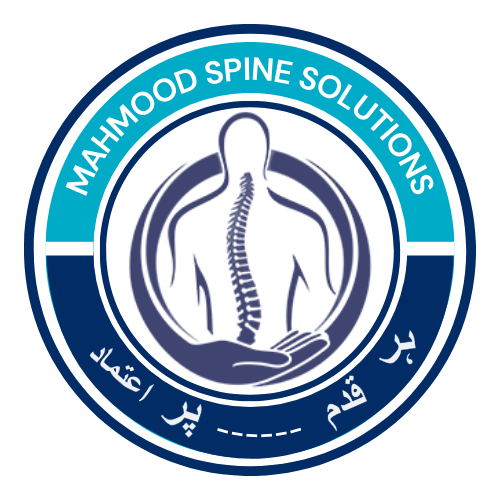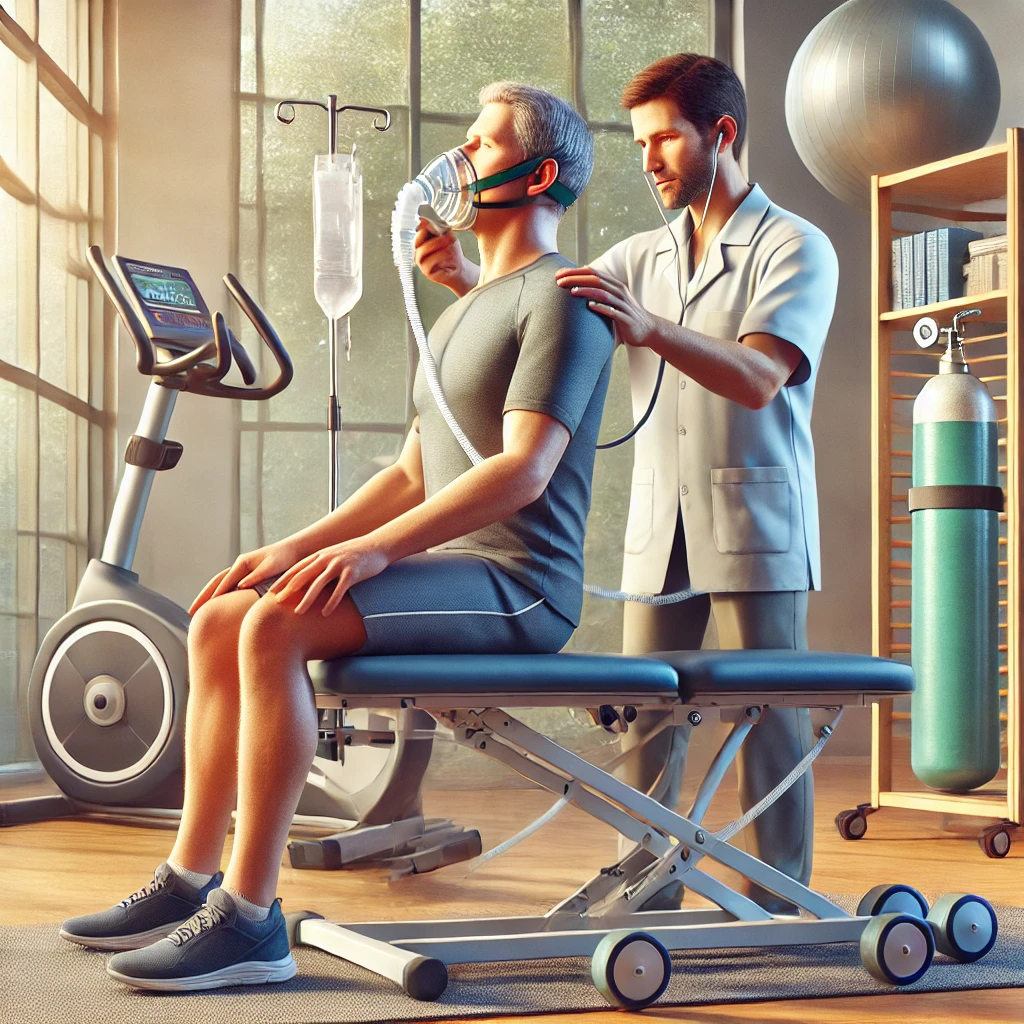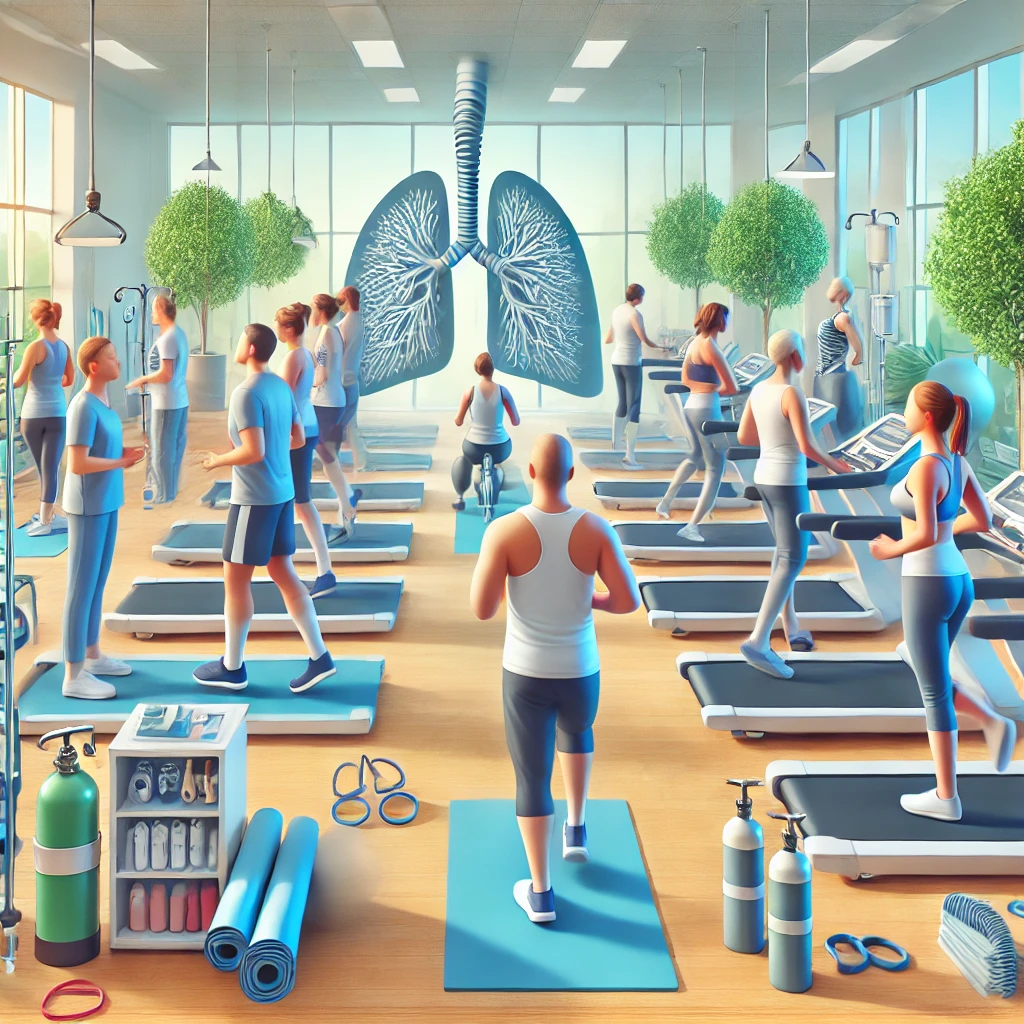The role of physical therapy in improving the quality of life for patients with chronic respiratory diseases is both multifaceted and indispensable. Chronic respiratory diseases, such as Chronic Obstructive Pulmonary Disease (COPD), asthma, interstitial lung disease, and cystic fibrosis, lead to long-term impairments in lung function, reduced physical activity, and diminished overall health. Physical therapy addresses these challenges through targeted interventions aimed at improving respiratory function, enhancing physical endurance, alleviating symptoms, and promoting psychological well-being.
Physical Therapy in Chronic Respiratory Disease:
- Enhancing Respiratory Efficiency:
Breathing Techniques: Physical therapy employs specific breathing exercises such as diaphragmatic breathing and pursed-lip breathing to improve oxygen exchange and reduce breathlessness. These techniques help regulate breathing patterns, especially during exertion, and maximize lung efficiency.
Airway Clearance: Methods like chest physiotherapy, percussion, vibration, and postural drainage assist in clearing mucus from the airways. This is particularly beneficial for conditions like cystic fibrosis and bronchiectasis, where mucus buildup is a primary concern.
- Improving Exercise Capacity:
Pulmonary Rehabilitation Programs: Physical therapy integrates aerobic exercises such as walking, cycling, and swimming to improve cardiovascular and muscular endurance. These programs are tailored to the patient’s condition and tolerance levels.
Strength Training: Resistance exercises focus on enhancing the strength of peripheral muscles, which often become deconditioned due to inactivity or chronic hypoxemia.
Energy Efficiency Training: Patients are trained to optimize energy use during daily activities, reducing fatigue and enhancing productivity.
- Symptom Management:
Reduction in Dyspnea: Shortness of breath is a debilitating symptom in chronic respiratory diseases. By improving lung mechanics and physical fitness, physical therapy reduces the intensity of dyspnea, enabling patients to perform activities with greater ease.
Decreasing Fatigue: Regular physical activity improves energy levels and reduces the chronic fatigue often associated with respiratory diseases.
- Psychosocial and Emotional Support:
Mental Health Benefits: Chronic illnesses are often accompanied by anxiety, depression, and feelings of isolation. Physical therapy, by improving physical well-being, contributes to better mental health. Exercise is known to release endorphins, which help alleviate symptoms of anxiety and depression.
Improved Self-Esteem: As patients regain strength and mobility, their confidence in managing their condition increases, promoting independence.
- Improving Posture and Flexibility:
Postural Training: Poor posture, often seen in patients with chronic respiratory conditions, can further restrict lung capacity. Physical therapy includes postural correction exercises that allow for better lung expansion and more efficient breathing.
Stretching Exercises: Stretching improves joint and muscle flexibility, reducing the stiffness that results from prolonged inactivity.
- Empowering Self-Management:
Education: Physical therapists educate patients on disease management, breathing strategies, and lifestyle modifications. Patients learn to recognize early signs of exacerbations and take appropriate action.
Prevention of Exacerbations: By building endurance and improving overall health, physical therapy helps reduce the frequency and severity of disease exacerbations.
- Long-Term Benefits and Maintenance:
Sustained Physical Activity: Physical therapy encourages the adoption of long-term exercise habits, preventing further deconditioning and promoting overall health.
Lower Hospitalization Rates: Regular physical therapy reduces the likelihood of hospital admissions by improving patients’ ability to cope with their condition.
Enhanced Quality of Life: By addressing physical, psychological, and social factors, physical therapy helps patients lead more fulfilling and independent lives.
Evidence Supporting Physical Therapy in Respiratory Diseases
Clinical Trials: Research has consistently shown that pulmonary rehabilitation improves exercise tolerance, reduces dyspnea, and enhances health-related quality of life (HRQoL) in patients with COPD and other chronic respiratory conditions.
Reduced Healthcare Costs: Patients who participate in regular physical therapy programs report fewer hospital visits and medical interventions.
Conclusion:
Physical therapy is an integral part of the comprehensive management of chronic respiratory diseases. It not only addresses the physical limitations imposed by these conditions but also provides patients with the tools to lead more active, independent, and satisfying lives. By improving respiratory function, enhancing endurance, reducing symptoms, and promoting mental well-being, physical therapy plays a pivotal role in enhancing the overall quality of life for patients.
About Authors
Dr. Muhammad Mahmood Ahmad is a Spinal as well as an Orthopedic Surgeon with over 14 years of experience currently practicing at Razia Saeed Hospital, Multan.






